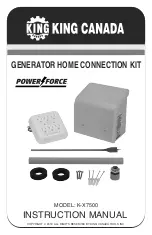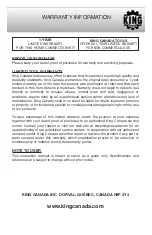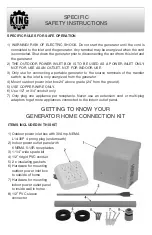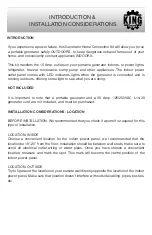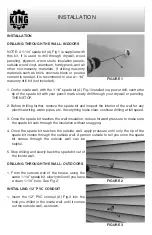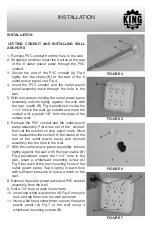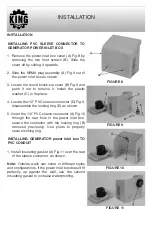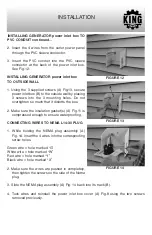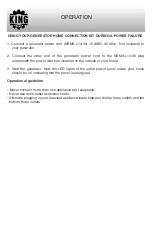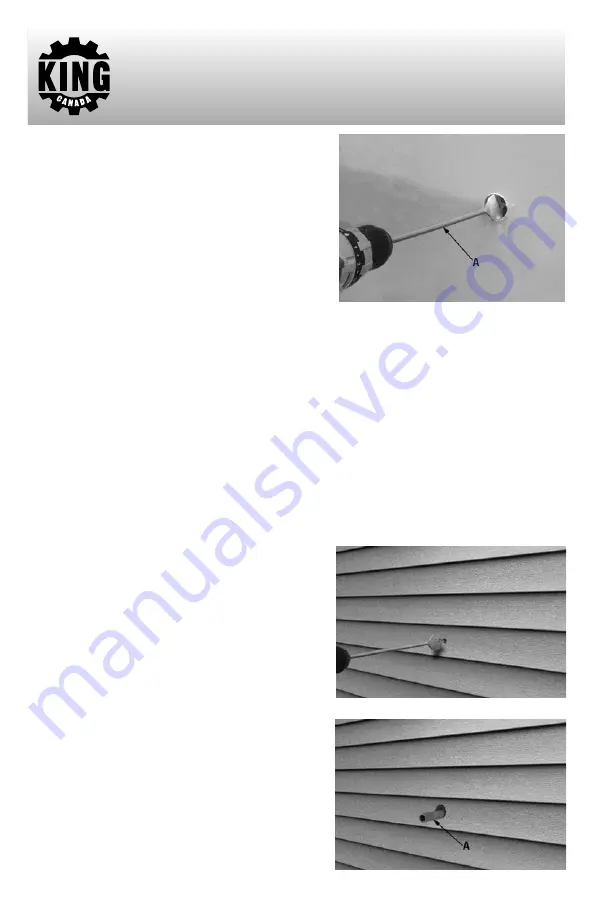
INSTALLATION
INSTALLATION
DRILLING THROUGH THE WALL- INDOORS
NOTE: A 1-1/4” spade bit (A) Fig.1 is supplied with
this kit. It is used to drill through drywall, wood
paneling, plywood, wood studs, insulation panels,
outside wood, vinyl, aluminum, hardy plank, and all
other non-masonry materials. If drilling masonry
materials such as brick, concrete block or poured
cement is needed, it is recommend to use a 1-1/4”
masonry drill bit (not included).
1. On the inside wall, with the 1-1/4” spade bit (A) Fig.1 installed in a power drill, centre the
tip of the spade bit with your pencil mark, slowly drill through your drywall or paneling.
THEN STOP.
2. Before drilling further, remove the spade bit and inspect the interior of the wall for any
electrical wiring, water pipes, etc. If everything looks clear, continue drilling at full speed.
3. Once the spade bit reaches the wall insulation, reduce forward pressure to make sure
the spade bit cuts through the insulation without snagging.
4. Once the spade bit reaches the outside wall, apply pressure until only the tip of the
spade bit comes through the outside wall. A person outside to tell you once the spade
bit comes through the outside wall can be
helpful.
5. Stop drilling and slowly back the spade bit out of
the inside wall.
DRILLING THROUGH THE WALL- OUTDOORS
1. From the outside wall of the house, using the
same 1-1/4” spade bit, slowly drill until you have
a clean 1-1/4” hole. See Fig.2.
INSTALLING 1/2” PVC CONDUIT
1. Insert the 1/2” PVC conduit (A) Fig.3 into the
hole you drilled in the inside wall, until it comes
out the outside wall, as shown.
FIGURE 1
FIGURE 2
FIGURE 3

